Barrel Finishes 101: The Secret Influence of Wood
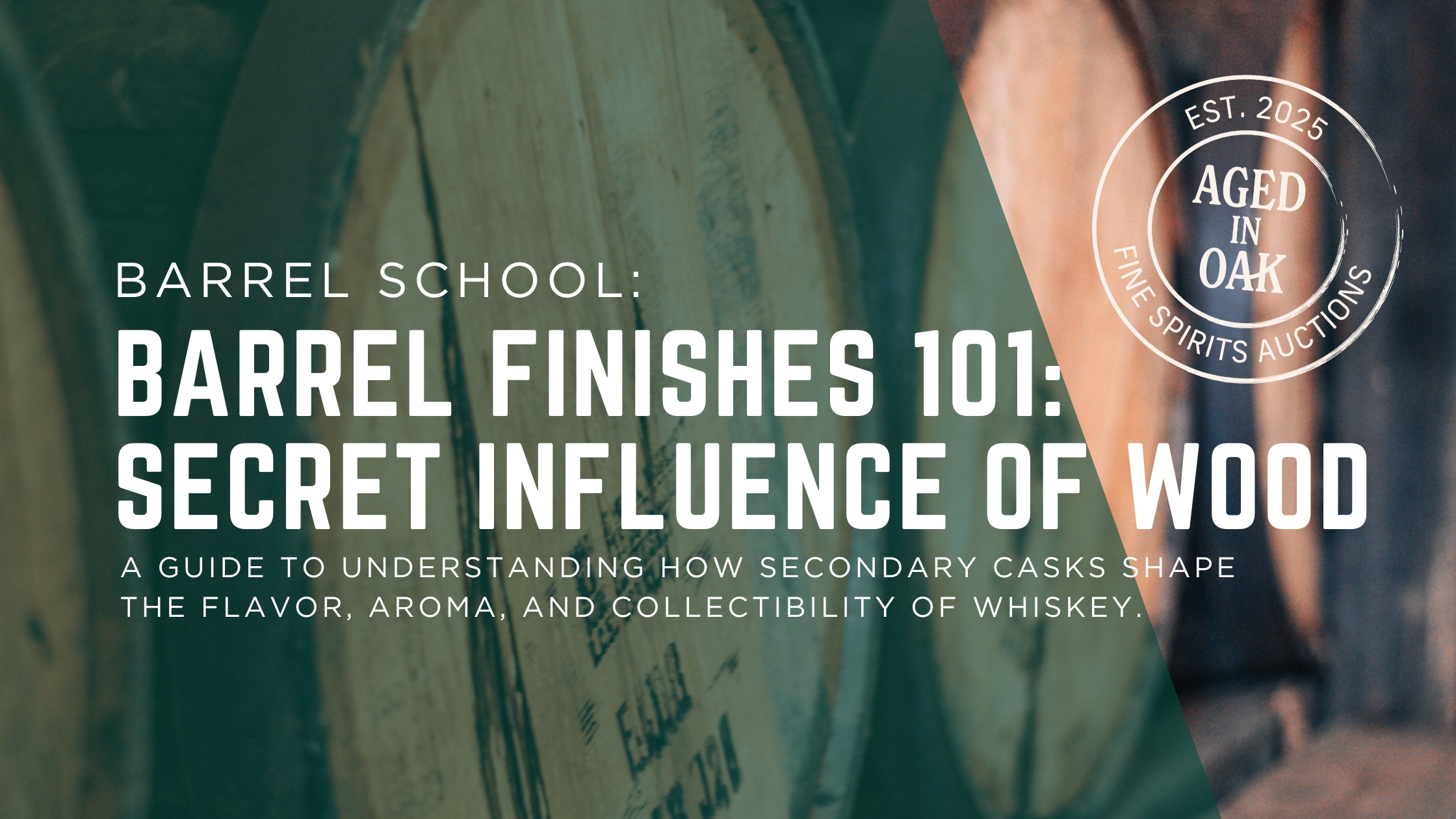
What is a Barrel Finish?
A barrel finish occurs when whiskey is moved from its original aging barrel into a second cask for further maturation. This secondary aging imparts additional flavors and aromas without removing the signature characteristics of the original spirit.
Finished whiskeys are often limited releases, making them highly sought after by collectors and enthusiasts. Finishes can vary widely in intensity depending on the type of cask, its previous contents, and the duration of the finish.
Common Types of Barrel Finishes
Different cask types contribute unique flavor profiles:
- Port Cask Finish: Adds notes of dark fruit, berries, and subtle cocoa, often enhancing sweetness and depth.
- Sherry Cask Finish: Imparts dried fruit, nuts, gentle spice, and a rounder mouthfeel.
- Rum Cask Finish: Introduces tropical sweetness, caramel, and a warming, lingering finish.
- Mizunara Oak Finish: Rare and exotic, providing sandalwood, coconut, and subtle incense-like aromas.
- Other Finishes: Cognac, wine, and specialty barrel finishes continue to expand creative possibilities, giving each whiskey a distinct signature.
How Barrel Finishing Works
Barrel finishing is a careful balance of art and science. Distillers consider several factors:
- Cask Selection: The previous contents of the barrel dictate the secondary flavors imparted.
- Duration: Too brief, and the finish may be imperceptible; too long, and the secondary notes can overpower the base whiskey.
- Integration: The finished whiskey should maintain its original character while gaining complexity.
Collectors and enthusiasts often pay close attention to these factors when selecting bottles, as they can significantly influence both flavor and value.
Recognizing Finishes in the Bottle
Understanding how to identify a barrel finish is an important skill for collectors:
- Label Information: Many distilleries include finishing details on the bottle — for example, “Sherry Cask Finish” or “Finished in Mizunara Oak.”
- Color: Finished whiskeys often have a richer, deeper hue compared to standard releases.
- Nose and Palate: Secondary casks contribute distinctive aromas and flavors, from dried fruit and nuts to exotic wood or incense notes.
- Limited Edition Indicators: Finished whiskeys are often part of limited releases or small batch editions, making them more collectible.
Why Barrel Finishes Matter for Collectors
Barrel finishes can increase a whiskey’s collectibility and market value for several reasons:
- Uniqueness: Because barrels differ slightly, each finished batch may vary, creating rare and highly sought-after bottles.
- Limited Production: Many finishes are released in smaller quantities than standard offerings.
- Flavor Exploration: Collectors can experience a range of flavor profiles within a single distillery’s portfolio by seeking out different finishes.
- Auction Appeal: Finished whiskeys often attract attention in online and live auctions because they are visually appealing, flavorful, and rare.
Tasting Finished Whiskeys
When evaluating finished whiskeys for either collection or enjoyment, a systematic approach helps identify the influence of the secondary cask:
- Visual: Observe color differences — a port or sherry finish can deepen the whiskey’s hue.
- Aroma: Smell for additional complexity — dried fruits, nuts, wood, or exotic spices introduced by the finish.
- Taste: Assess how the finish integrates with the base whiskey’s sweetness, spice, and oak.
- Finish: Focus on the lingering flavors — a well-executed finish should enhance without overpowering.
Collector Tips for Evaluating Finished Whiskeys
- Look for Limited Editions: These are often produced in smaller quantities and may appreciate in value.
- Check Provenance: Distillery, batch number, and cask origin can give insight into rarity.
- Consider Aging: Secondary aging duration can indicate intensity and subtlety of flavors.
- Compare Across Releases: Trying multiple finishes from the same distillery helps identify signature characteristics versus secondary influences.
The Final Pour
Barrel finishes are a key factor in the complexity, uniqueness, and collectibility of whiskey. Understanding how wood influences flavor and aroma helps enthusiasts make informed decisions — whether for personal enjoyment, auction bidding, or building a refined collection. Explore finished whiskeys in our online auction or taste the craftsmanship firsthand at our Tasting Parlor in Vernon Hills, where every pour tells a story of its cask.
More Fresh Pours and Perspectives

Inside the Auction: Rare Scotch, Collector Trains & 200+ Bottles Ready for the Taking

Inside the Auction: Rare Scotch, Collector Trains & 200+ Bottles Ready for the Taking

The Bourbon Family Tree: Exploring the Branches of America’s Favorite Spirit

The Bourbon Family Tree: Exploring the Branches of America’s Favorite Spirit

From Distillery to Digital — How Bourbon Collecting Moved Online

From Distillery to Digital — How Bourbon Collecting Moved Online

Blanton’s Bourbon: History, Expressions, and the Hype Behind America’s Most Collectible Bourbon

Blanton’s Bourbon: History, Expressions, and the Hype Behind America’s Most Collectible Bourbon

Inside the Auction: Iconic Bottles, Bourbon Legends & the Thrill of the Bid

Inside the Auction: Iconic Bottles, Bourbon Legends & the Thrill of the Bid
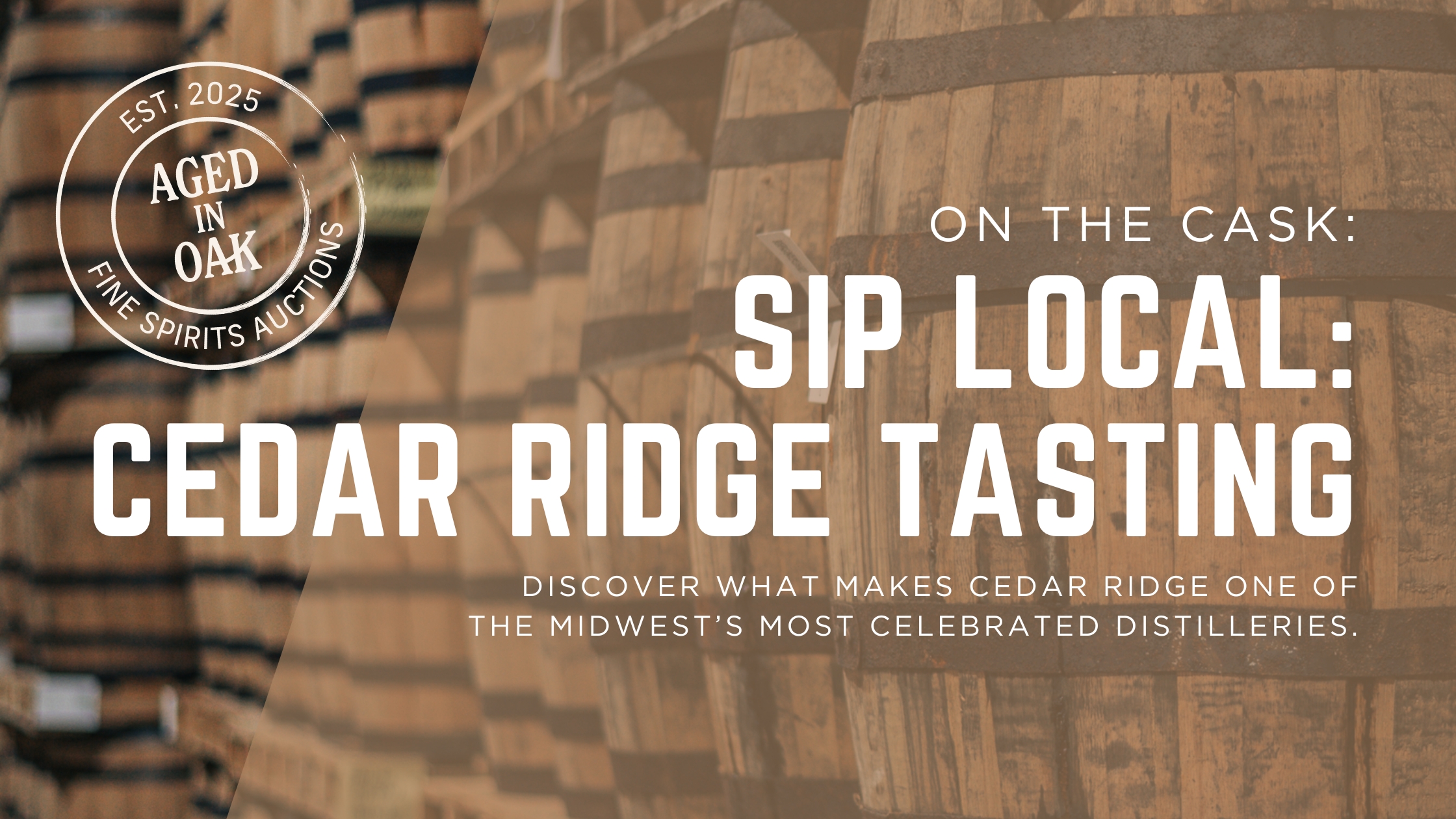
Sip Local: Cedar Ridge Distillery Tasting at Aged in Oak

Sip Local: Cedar Ridge Distillery Tasting at Aged in Oak

Inside the Auction: Powerhouse Picks, Proof, and the Joy of the Bid

Inside the Auction: Powerhouse Picks, Proof, and the Joy of the Bid

The Thrill of No Reserve: Why These Bourbon Auctions Keep Collectors Coming Back

The Thrill of No Reserve: Why These Bourbon Auctions Keep Collectors Coming Back

The Thrill of No Reserve: Why These Bourbon Auctions Keep Collectors Coming Back

The Thrill of No Reserve: Why These Bourbon Auctions Keep Collectors Coming Back

What Bourbon Is Made From: The Art (and Law) Behind America’s Spirit

What Bourbon Is Made From: The Art (and Law) Behind America’s Spirit

The Ghosts of the Rickhouse: Haunted Legends of Bourbon Country

The Ghosts of the Rickhouse: Haunted Legends of Bourbon Country

Single Barrel vs. Small Batch: What’s the Difference (and Does It Matter?)

Single Barrel vs. Small Batch: What’s the Difference (and Does It Matter?)

Bottles with a Past: The Spooky Side of Bourbon History

Bottles with a Past: The Spooky Side of Bourbon History
.jpg)
Inside the Auction: Hidden Gems, Signed Bottles & Kentucky’s Finest
.jpg)
Inside the Auction: Hidden Gems, Signed Bottles & Kentucky’s Finest
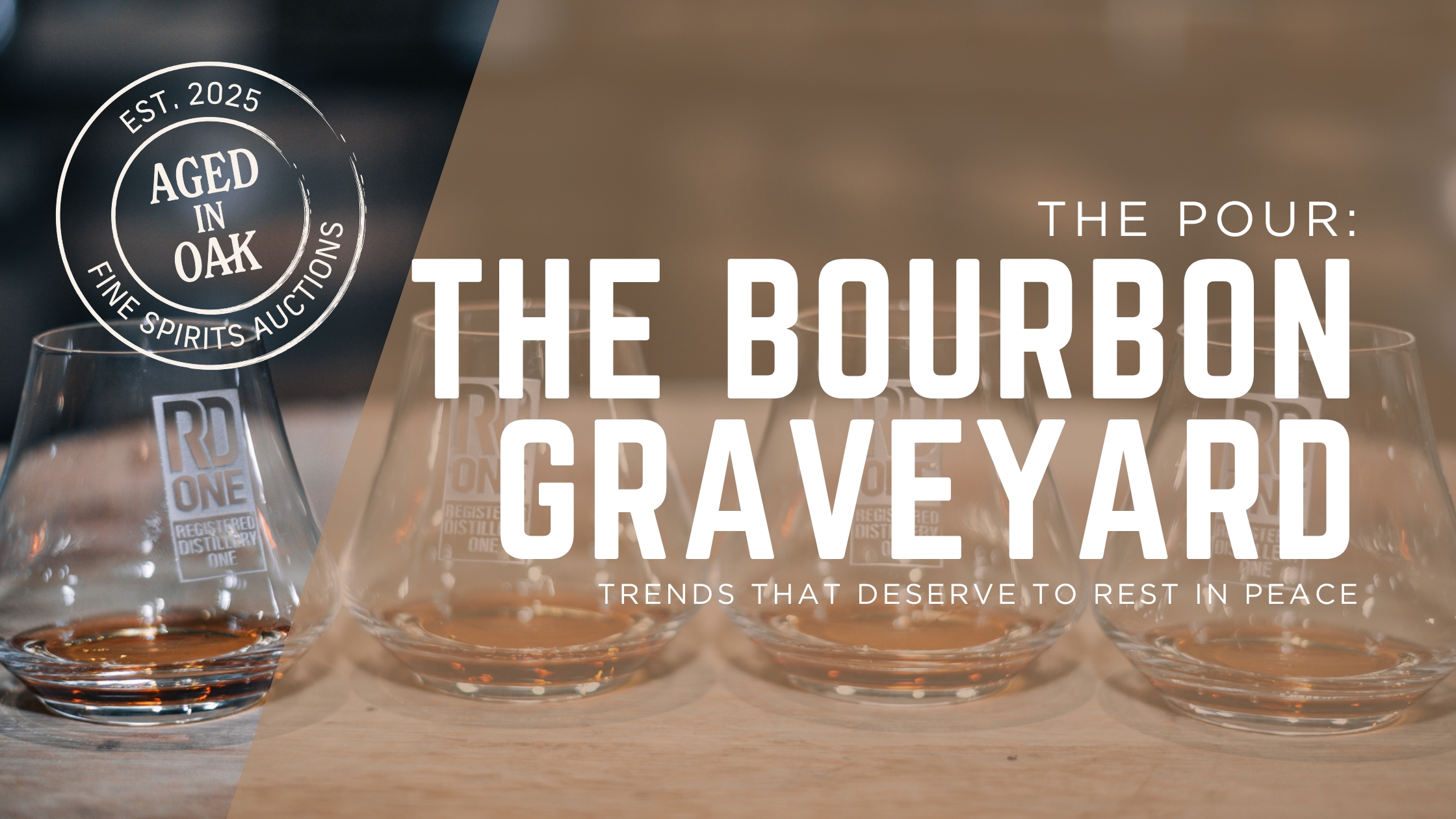
The Bourbon Graveyard: Trends That Deserve to Rest in Peace

The Bourbon Graveyard: Trends That Deserve to Rest in Peace

How to Read a Bourbon Label Like a Pro: Decoding the secrets behind age, proof, and distillery details

How to Read a Bourbon Label Like a Pro: Decoding the secrets behind age, proof, and distillery details

Bringing Bourbon’s Heritage Home: How Aged in Oak captures the soul of Bardstown in the heart of Vernon Hills.

Bringing Bourbon’s Heritage Home: How Aged in Oak captures the soul of Bardstown in the heart of Vernon Hills.

Inside the Auction: Bourbon Legends, Cult Favorites, and the Hunt for Purple Reign

Inside the Auction: Bourbon Legends, Cult Favorites, and the Hunt for Purple Reign
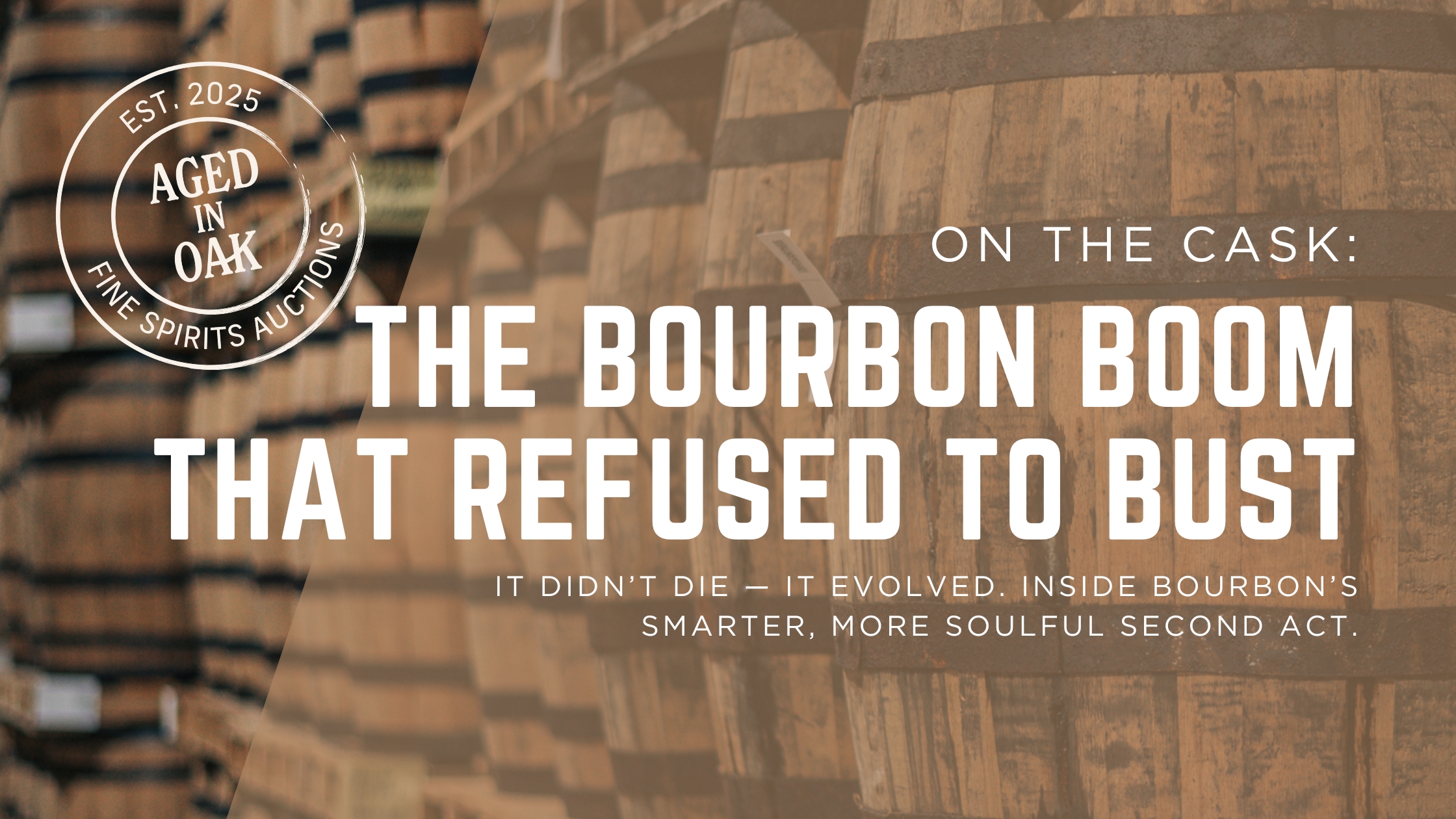
The Bourbon Boom That Refused to Bust

The Bourbon Boom That Refused to Bust
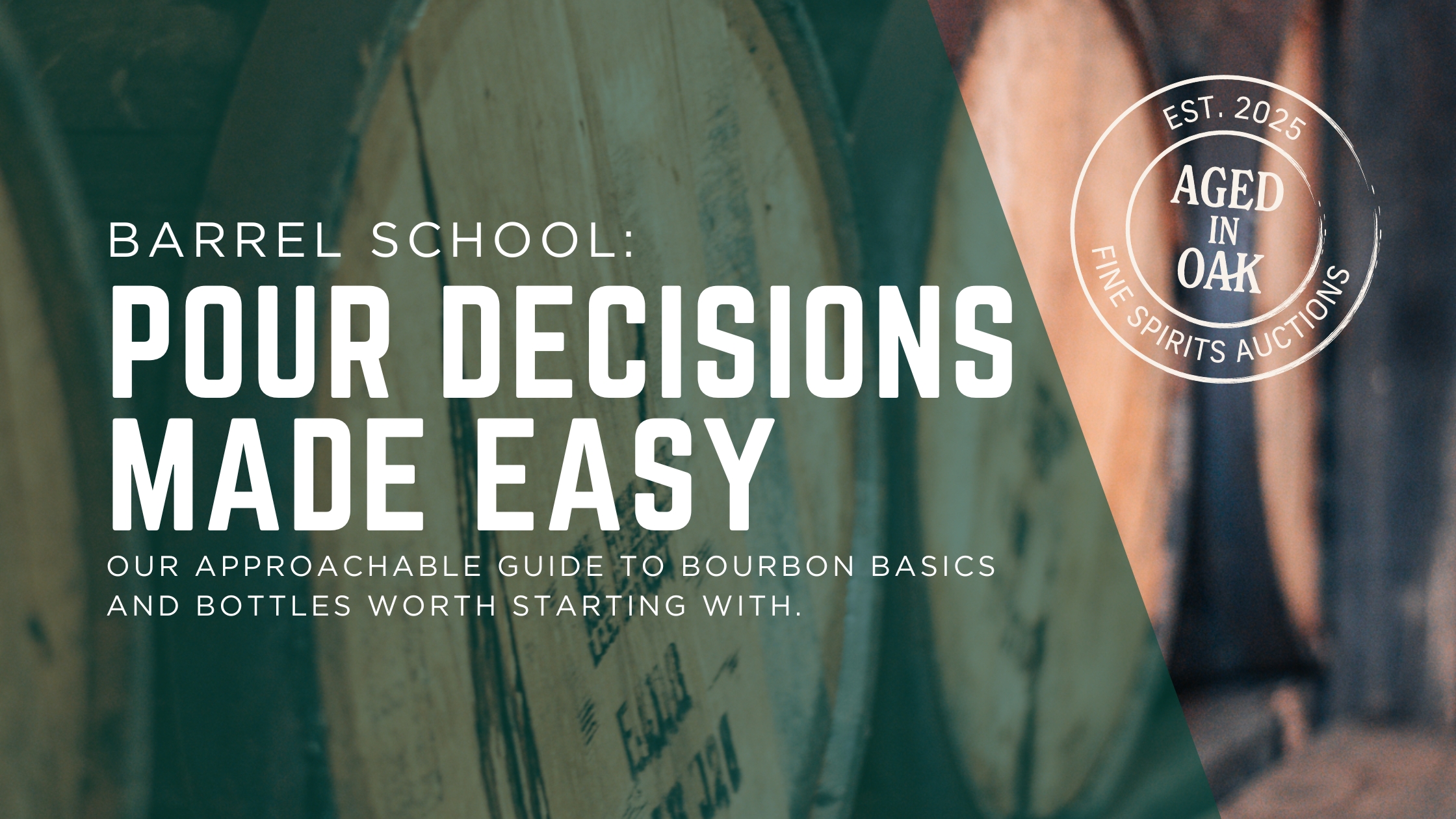
Pour Decisions Made Easy: Our Approachable Guide to Bourbon Basics and Bottles Worth Starting With

Pour Decisions Made Easy: Our Approachable Guide to Bourbon Basics and Bottles Worth Starting With

Bourbon, Community, and a Little Rebellion: Why tastings are the hottest social scene of 2025

Bourbon, Community, and a Little Rebellion: Why tastings are the hottest social scene of 2025

The Bottle That Broke the Rules: The Story of Blanton’s Original Single Barrel

The Bottle That Broke the Rules: The Story of Blanton’s Original Single Barrel

A Toast to Hoptoberfest: New Faces, Great Bourbon, and Unforgettable Conversations

A Toast to Hoptoberfest: New Faces, Great Bourbon, and Unforgettable Conversations
.jpg)
Bourbon Through the Ages: The Stories Behind America’s Spirit
.jpg)
Bourbon Through the Ages: The Stories Behind America’s Spirit
.jpg)
Rare Bourbon, Signature Cocktails, and Community -- Find It All At Aged in Oak in Vernon Hills
.jpg)
Rare Bourbon, Signature Cocktails, and Community -- Find It All At Aged in Oak in Vernon Hills

Fall Into Flavor: Bourbon Recipes That Hit Harder Than Pumpkin Spice

Fall Into Flavor: Bourbon Recipes That Hit Harder Than Pumpkin Spice

What Your Go-To Pour Says About You: A Bourbon Personality Test You Didn’t Know You Needed

What Your Go-To Pour Says About You: A Bourbon Personality Test You Didn’t Know You Needed

From Still to Auction Block: How Bourbon Matures (And Why Oak Is Everything)

From Still to Auction Block: How Bourbon Matures (And Why Oak Is Everything)

Weller Bourbon: The People’s Pappy and the Wheated Whiskey That Broke the Market

Weller Bourbon: The People’s Pappy and the Wheated Whiskey That Broke the Market
.jpg)
Crown Jewel Bourbon Bottles: The Ultimate Collectible Whiskey for Serious Collectors
.jpg)
Crown Jewel Bourbon Bottles: The Ultimate Collectible Whiskey for Serious Collectors

How Global Market Trends Are Shaping the Whiskey Collectible Space in 2025

How Global Market Trends Are Shaping the Whiskey Collectible Space in 2025

Bid Boldly. Sip Exceptionally. Dominate the Auction.

Bid Boldly. Sip Exceptionally. Dominate the Auction.
.jpg)
We’re in the Daily Herald: Building a Bourbon Community in Vernon Hills
.jpg)
We’re in the Daily Herald: Building a Bourbon Community in Vernon Hills
.jpg)
From Shelf to Sip: The People Who Keep Bourbon Alive
.jpg)
From Shelf to Sip: The People Who Keep Bourbon Alive
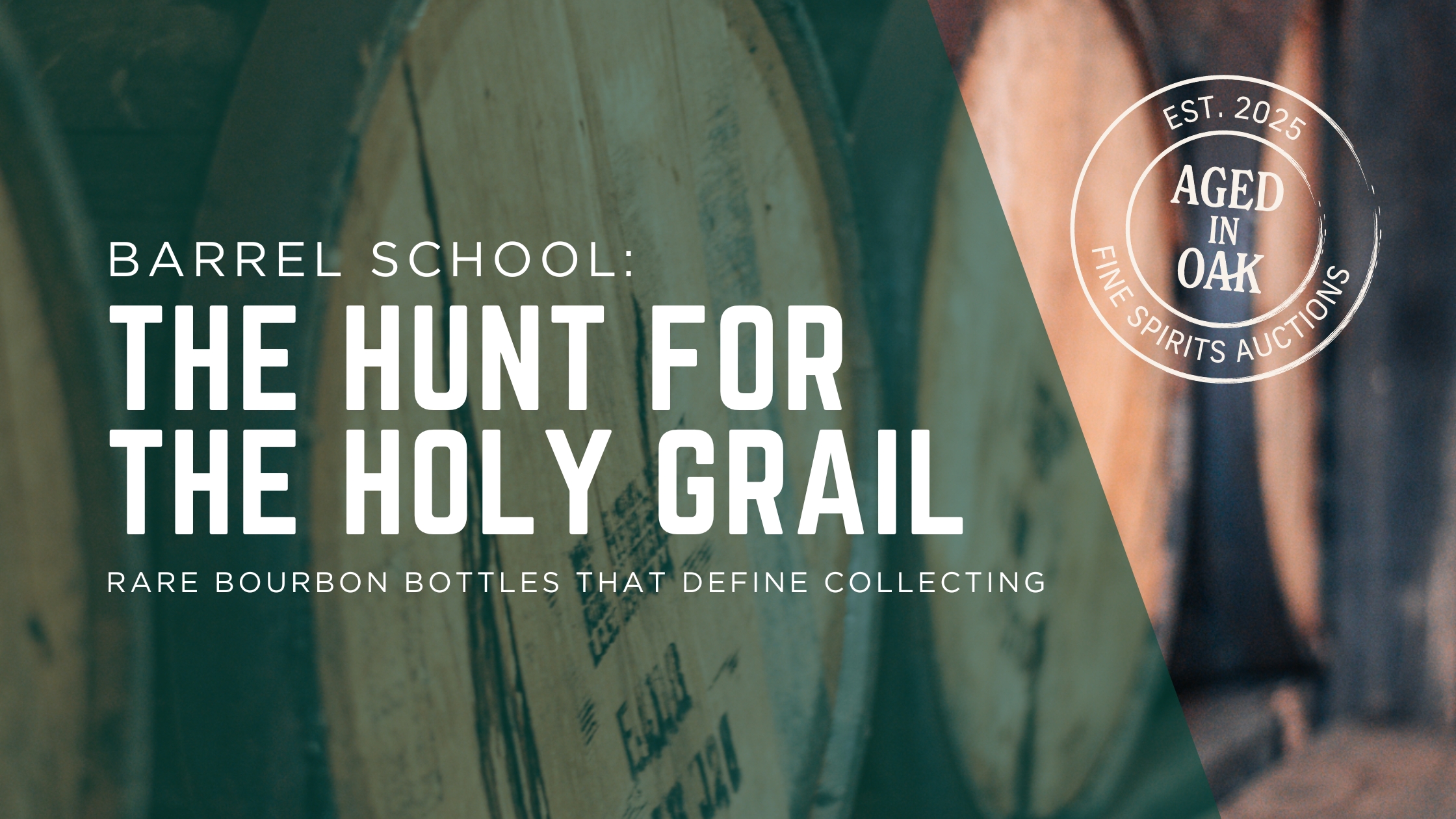
The Hunt for the Holy Grail: Rare Bourbon Bottles That Define Collecting

The Hunt for the Holy Grail: Rare Bourbon Bottles That Define Collecting

Cash Out Without Selling Out: How to Consign Bourbon with Aged in Oak

Cash Out Without Selling Out: How to Consign Bourbon with Aged in Oak
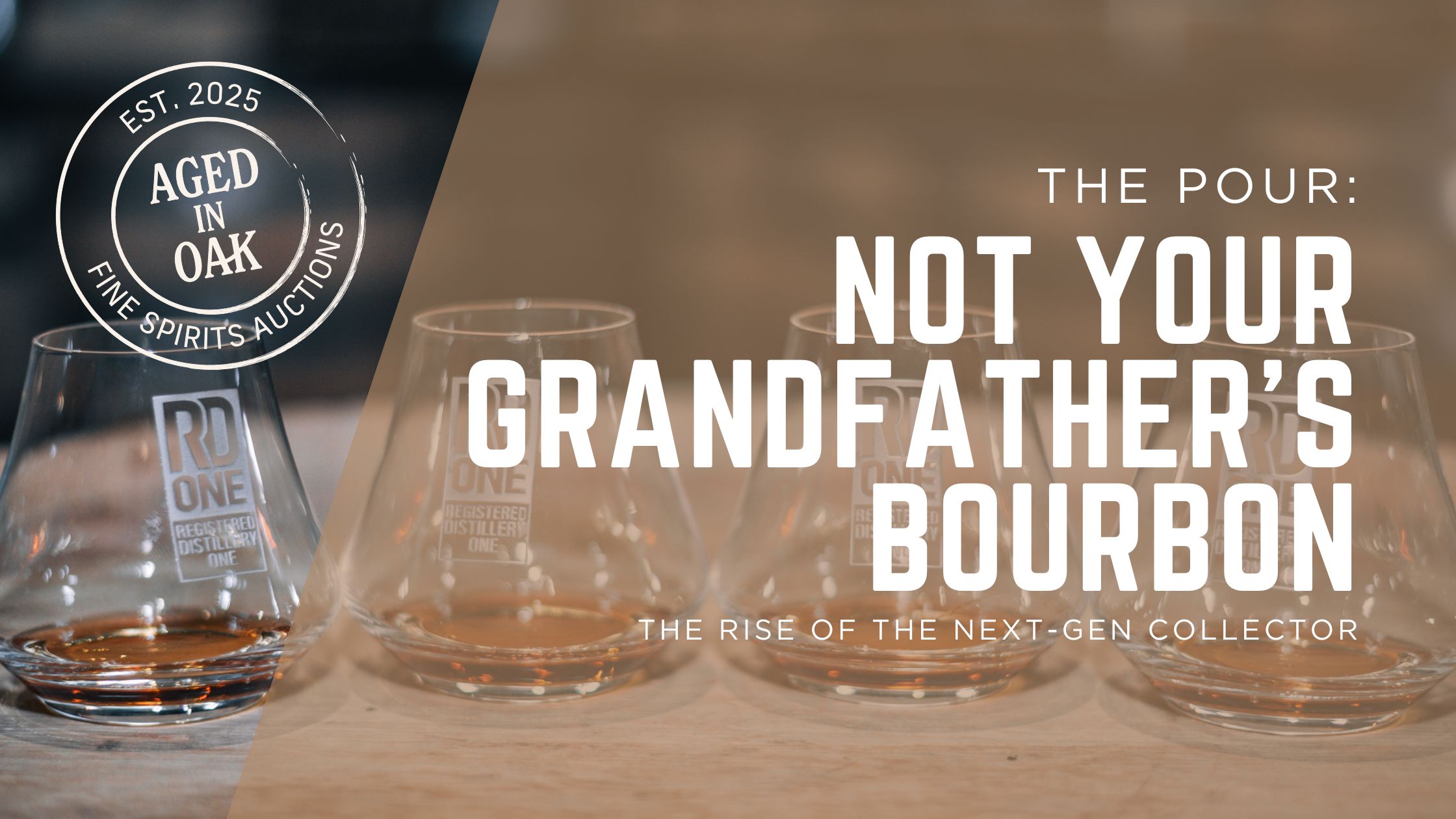
Not Your Grandfather’s Bourbon: The Rise of the Next-Gen Collector

Not Your Grandfather’s Bourbon: The Rise of the Next-Gen Collector
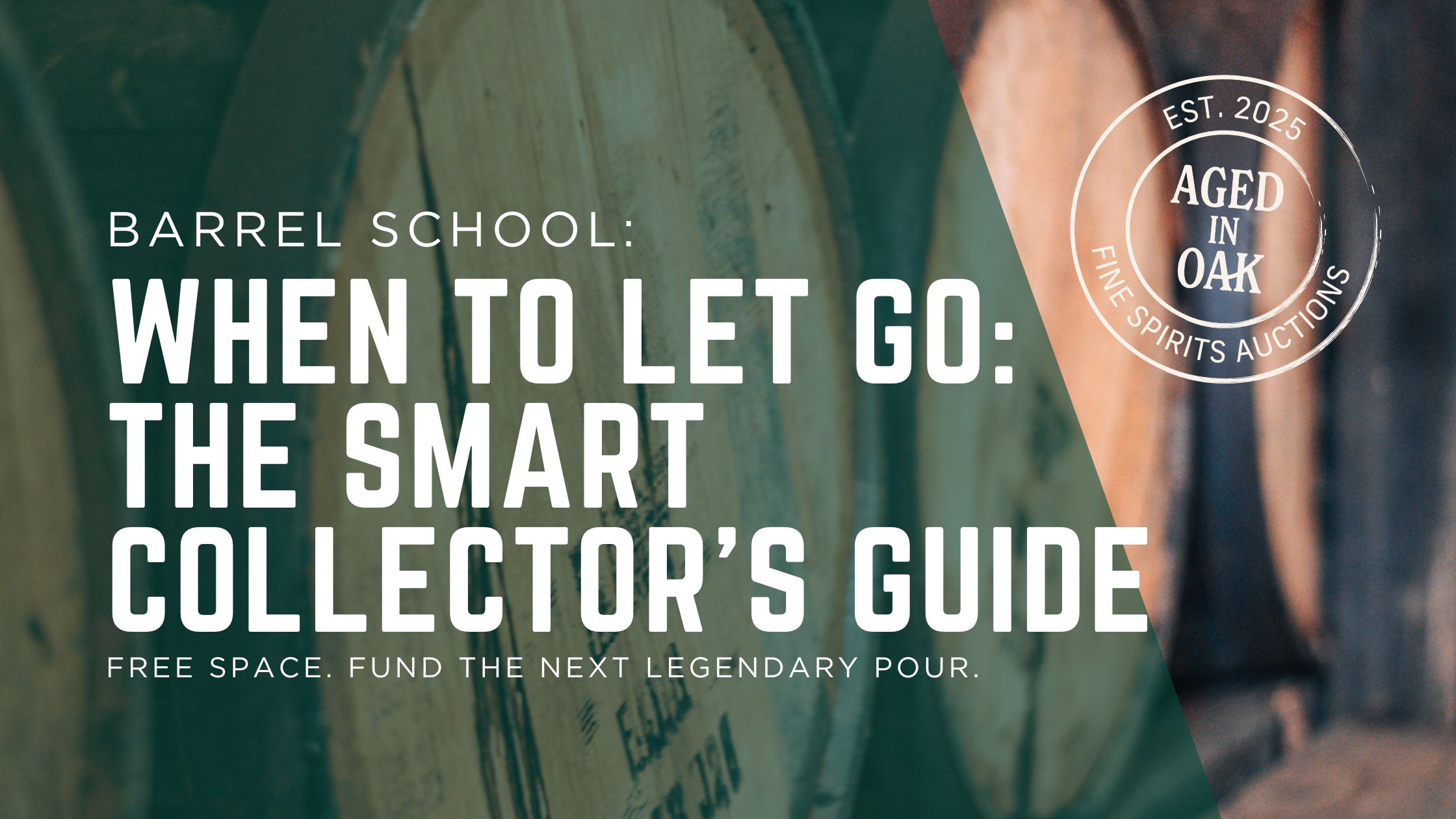
When to Let Go: Knowing It’s Time to Consign Your Bourbon

When to Let Go: Knowing It’s Time to Consign Your Bourbon

The Gospel According to Pappy: Why This Bottle Rules the Bourbon Underworld

The Gospel According to Pappy: Why This Bottle Rules the Bourbon Underworld

Tapping a Bourbon Barrel with RD1 Distillery

Tapping a Bourbon Barrel with RD1 Distillery

Crafting the "Circa 1856 Old Fashioned" at Chicken Cock

Crafting the "Circa 1856 Old Fashioned" at Chicken Cock

Aged in Oak Debuts Online Bourbon Community May 15, with Auctions and Bottle Appraisals Coming Summer 2025


